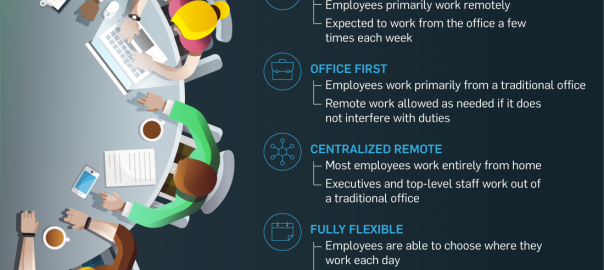Since 2020, the number of Americans working from home has increased threefold. 95% of office workers transitioned to remote work at least part time during the pandemic. The move has proven popular; 97% now say they want remote work to stay. Workers have come to appreciate the flexibility remote work offers them. Many say they were more productive working from home, and few workers miss daily commuting.
Businesses stand to gain from continued remote work as well. Companies can save $ 11,000 per employee who works from home 2-3 days a week. These savings present themselves in the form of lower office costs, reduced employee absence and turnover, and higher productivity levels. Still, only 37% of all US jobs can be done entirely at home. Businesses should develop hybrid workplaces to cultivate the best of both worlds.
What does a hybrid office look like? Each employee and business has a different idea. Some companies may prioritize remote work, only providing traditional workspaces for those with want or need. The opposite is also possible; companies may want employees primarily in the office but allow remote work as needed. Other businesses may prefer office occasional, in which employees come to the office a few times each week on predetermined schedules. The important thing about choosing a hybrid model is ensuring both the company and the workers are getting the most of their arrangement. Communication and organization are key.
Designing a hybrid workspace isn’t easy. Planning office space takes on a new level when employees only use it part of the time. Managers must be careful to foster inclusion for all employees, even those not physically present. Collaboration can also be difficult to foster in remote environments.
The hybrid work transition may be bumpy, but it is the future. Office work has changed. Learn more in the visual deep dive below:
![Is the Hybrid Workplace Here to Stay? [Infographic] Is the Hybrid Workplace Here to Stay? [Infographic]](https://www.onlinesalesguidetip.com/wp-content/uploads/2021/09/Is-the-Hybrid-Workplace-Here-to-Stay-Infographic.png)
Infographic Source: TrackTime24
Digital & Social Articles on Business 2 Community
(36)
Report Post



